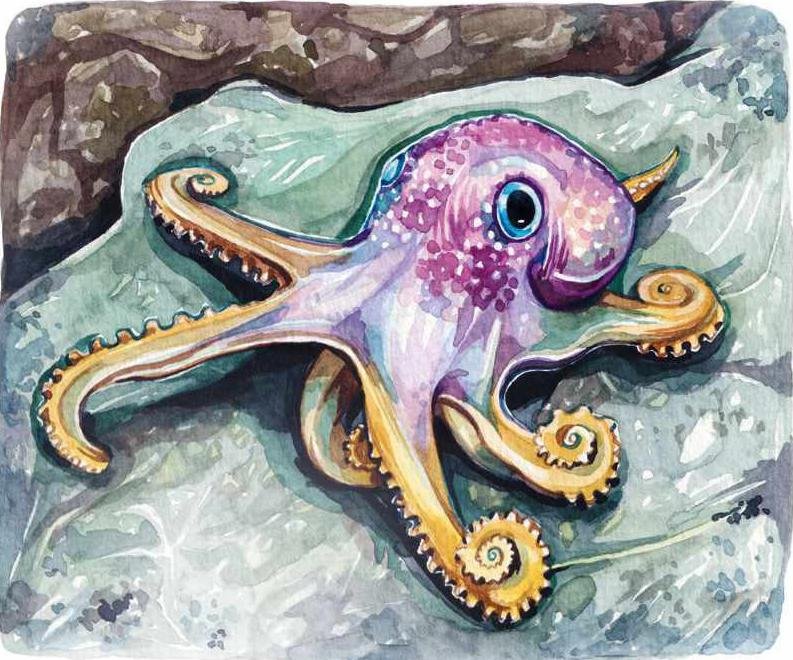DEEP-SEA OCTOPUS
Lucy Cooke on nature’s most martyred mother

THE GOAL OF ALL SPECIES IS TO RAISE healthy offspring, and some animal mums go to extraordinary lengths to insure the survival of their next generation. Elephant mothers endure a weighty 22-month pregnancy and can suckle their calf for up to 10 years. The yellow-billed hornbill incubates her precious eggs in prison. She’s trapped in a tree cavity for two long months by a wall made out of her own faeces, with just a small slit through which her partner can pass food. Then there’s the caecilian – a legless, worm-like amphibian that grows an extra thick epithelial skin layer during brooding for her young to consume. The babies develop specialised teeth for tearing off their mother’s skin, which is rich in protein and fat to help them grow.
Competition for nature’s most martyred mother is stiff, but a serious contender must be the deep-sea octopus, Graneledone boreopacifica. Like many of her eight-legged cousins, this mother will lay just one bunch of eggs in her lifetime, so it pays for her to make the ultimate sacrifice for this solitary legacy: life itself.
Octopus eggs would make a tasty meal for many a marine predator, so she must guard her cache of 160 tear-drop eggs, roughly the size of olives, by cradling them under her body. As the young develop inside the eggs, they require plenty of oxygen, so she dutifully squirts fresh oxygenated seawater over them that also keeps them clear of any silt or debris.
Once freed from her defensive duty she duly dies, most probably of starvation. She won’t have eaten for the entire brooding period. In most octopuses this famine lasts a matter of months, but for this deep-sea dweller it can be far longer. A research submarine from the Monterey Bay Aquarium observed one devoted deep-sea octopus rack up an astonishing four and a half years of starving submission, making her the longest brooding mother on record.
The octopus in question was clinging to a rock face in the depths of the Monterey Canyon, off the coast of California, some 1,400 metres below the surface. The temperature at such depths is a chilly 3°C, and likely the reason why her labour of love was so protracted.
Development at cold temperatures is slower, and the researchers noted that the newborns of G. boreopacifica are larger and better developed than the hatchlings of any other octopus, giving them a better chance of survival.
The research submarine visited this mother over 18 times. They even tried to tempt her with pieces of crab, but she never yielded. As the months went by she slowly lost weight, and the skin sagging around her shrunken frame lost all pigment, leaving her a ghostly white facsimile of her former hunting self: time to die and pass the baton to the next generation.

Catch up with Lucy’s BBC Radio Four three-part series Political Animals

Lucy is a broadcaster, zoologist and author of Bitch: What Does it Mean to be Female? (paperback on sale now)